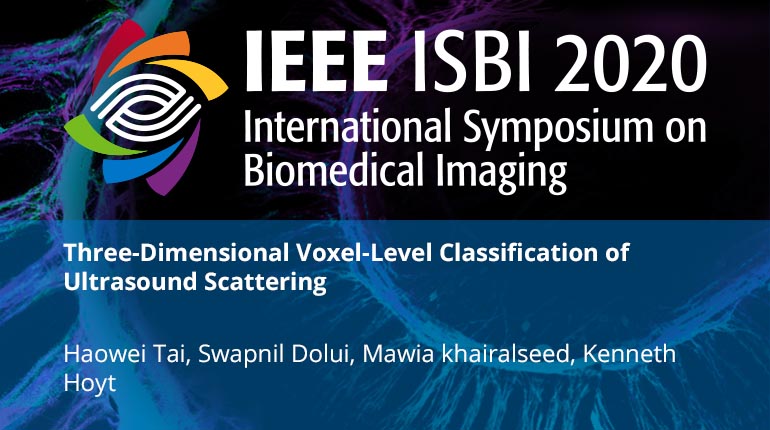
Already purchased this program?
Login to View
This video program is a part of the Premium package:
Three-Dimensional Voxel-Level Classification of Ultrasound Scattering
- IEEE MemberUS $11.00
- Society MemberUS $0.00
- IEEE Student MemberUS $11.00
- Non-IEEE MemberUS $15.00
Three-Dimensional Voxel-Level Classification of Ultrasound Scattering
Three-dimensional (3D) H-scan ultrasound (US) is a new high-resolution imaging technology for voxel-level tissue classification. For the purpose of validation, a simulated H-scan US imaging system was developed to comprehensively study the sensitivity to scatterer size in volume space. A programmable research US system (Vantage 256, Verasonics Inc, Kirkland, WA) equipped with a custom volumetric imaging transducer (4DL7, Vermon, Tours, France) was used for US data acquisition and comparison to simulated findings. Preliminary studies were conducted using homogeneous phantoms embedded with acoustic scatterers of varying sizes (15, 30, 40 or 250 ?m). Both simulation and experimental results indicate that the H-scan US imaging method is more sensitive than B-mode US in differentiating US scatterers of varying size. Overall, this study proved useful for evaluating H-scan US imaging of tissue scatterer patterns and will inform future technology research and development.
Three-dimensional (3D) H-scan ultrasound (US) is a new high-resolution imaging technology for voxel-level tissue classification. For the purpose of validation, a simulated H-scan US imaging system was developed to comprehensively study the sensitivity to scatterer size in volume space. A programmable research US system (Vantage 256, Verasonics Inc, Kirkland, WA) equipped with a custom volumetric imaging transducer (4DL7, Vermon, Tours, France) was used for US data acquisition and comparison to simulated findings. Preliminary studies were conducted using homogeneous phantoms embedded with acoustic scatterers of varying sizes (15, 30, 40 or 250 ?m). Both simulation and experimental results indicate that the H-scan US imaging method is more sensitive than B-mode US in differentiating US scatterers of varying size. Overall, this study proved useful for evaluating H-scan US imaging of tissue scatterer patterns and will inform future technology research and development.
 Cart
Cart Create Account
Create Account Sign In
Sign In





